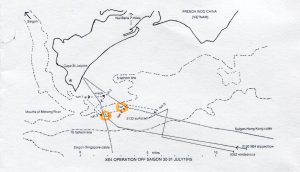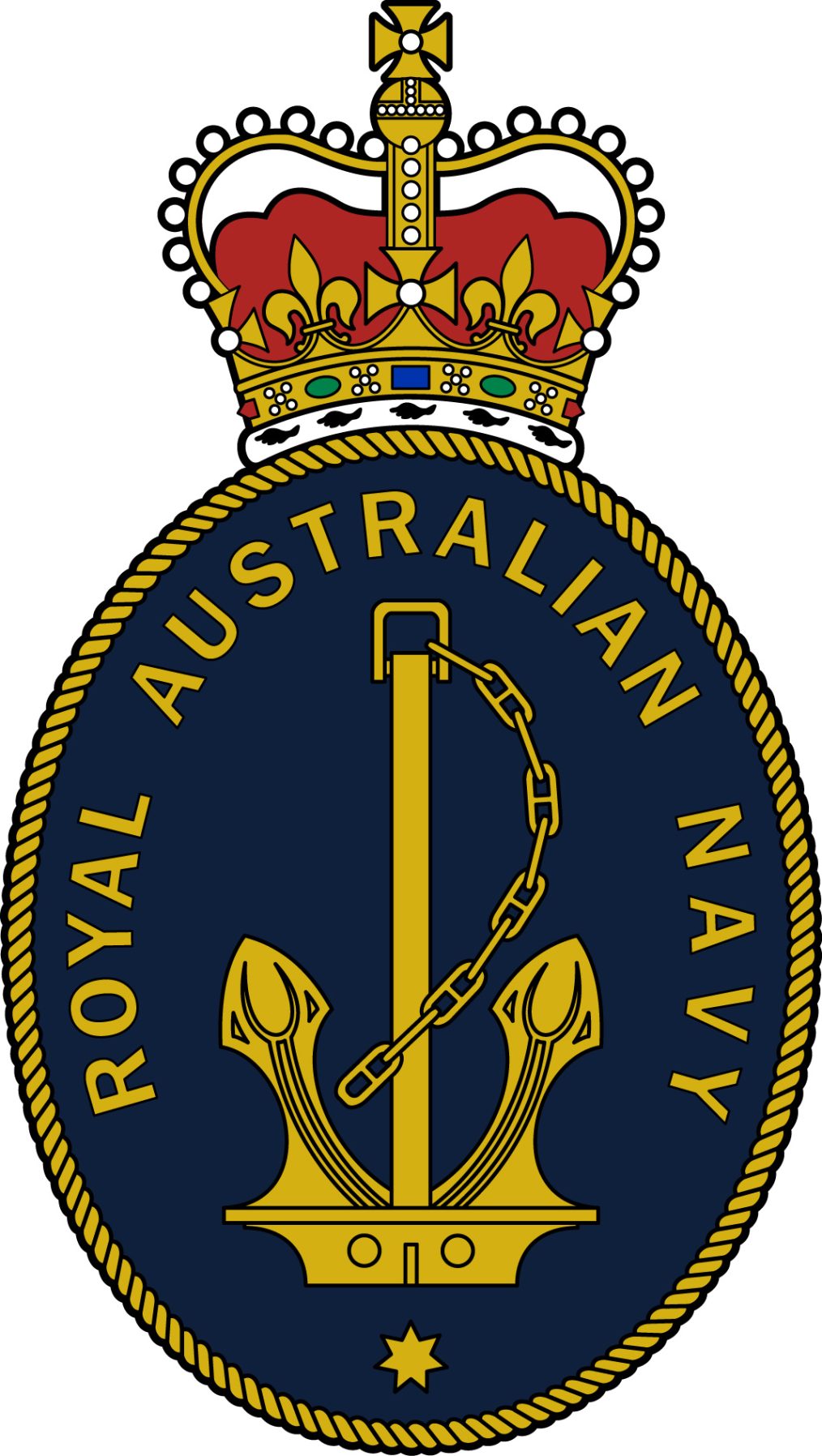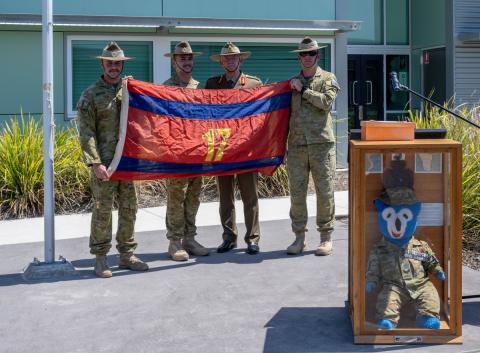The total value of the project is approximately $7 billion dollars, representing the single largest investment in Army capability to date. The agreement entails the delivery of 129 Redback vehicles, each to be manufactured within Australia. The manufacturing of all 129 vehicles will occur at the Hanwha Armoured vehicle Centre of Excellence (H-ACE) facility in Geelong.
The United States has formally requested Australia to deploy a naval warship to the Middle East in response to recent attacks carried out by Iranian-backed rebels. The request follows concerns of the Israel-Hamas conflict spreading across the region, heightened by Yemen’s Houthi Militia launching missile and drone attacks targeting southern Israel and commercial ships in the Red Sea.
Confirming the request, Federal Treasurer Jim Chalmers emphasized Australia’s existing involvement in maritime security in the region. The request came after the U.N. General Assembly’s non-binding resolution for an immediate ceasefire in the Israel-Hamas conflict, with Australia supporting the resolution along with 151 other countries.
Houthi rebels, sponsored by Iran, claimed responsibility for an attack on a Norwegian oil tanker, warning of targeting any ships traveling to or from Israel. The U.S. Defence Department reported three commercial ships being attacked by rebels in international waters, leading to the downing of a U.S. destroyer by missiles.
Labor MP Josh Burns acknowledged the complexity of the situation, pointing out Iran’s use of proxies like Hamas and Hezbollah to destabilize the region. Liberal Senator Jane Hume expressed Australia’s readiness to stand by its allies in the Middle East, particularly supporting Israel.
Australia, along with New Zealand and Canada, has called for urgent international efforts toward a sustainable ceasefire in the Israel-Hamas conflict. Prime Minister Anthony Albanese issued a joint statement expressing concern about the humanitarian conditions in Gaza and urging Hamas to release its hostages. The statement mourned the loss of innocent lives on both sides of the conflict.
After two years’ hard work, the Greek Spitfire is nearly complete. But will she fly? For the final days, all hands are on deck to get the project finished on time. Several people will be in attendance including the owners and investors of this passion project and veteran George Dunn hoping who is hoping to see his Spitfire fly again. Emotions are running high as they prepare for the maiden flight. Will it fly? Or will they see their hard work plummet? Hidden away in a little-known workshop at one of Britain’s most important wartime airbases, a team of dedicated engineers and enthusiasts are working round the clock to bring a national icon back to life. Over the course of a year and £2 million at stake, there’s no room for error as Peter Monk and his engineers try to turn a 1943 Mark IX Spitfire from rusty remains into the flying legend. This is the Spitfire Factory.
As Alexei Navalny disappears from the public eye in Russia, his spokesperson suggests it’s a Kremlin tactic to intensify his isolation during President Putin’s re-election campaign. Concerns grew after prison officials reported his absence from the inmate roster, and his associates have been unable to reach him for a week. Although the authorities confirm his transfer from the prison colony, they withhold information on his new location, following the secretive nature of Russian prison transfers. Navalny’s spokesperson fears the authorities will maintain the secrecy to limit his influence, especially after Putin’s recent announcement to seek another term. Kremlin spokesman Dmitry Peskov dismisses concerns about Navalny’s whereabouts, emphasizing that tracking inmates is not a priority. The U.S. expressions of concern are rejected, as Navalny remains imprisoned, serving a sentence he claims is politically motivated. Navalny, arrested in 2021 after recovering from nerve agent poisoning, has been a prominent critic of corruption and a key opposition figure.
Veteran Card holders and spouses can access DVA’s Veteran Benefits Program, delivered by Australian Partners of Defence (APOD), to shop for discounts on gifts, goods and services this Christmas.
Even for the most festive at heart, we know the holiday season can be an expensive and stressful time of year.
APOD offers an extensive range of products and services from affiliated businesses at rates discounted for veteran families. Offers include discounted fuel, which might be handy for those family trips over the holidays, and savings on your groceries or car hire whilst travelling. There’s also a large range of veteran-owned businesses that you can support through APOD.
Use the new APOD App to shop for fuel and other discounts while on the go, or just to access your digital Veteran Card!
Visit https://apod.com.au/ or download the APOD App on your Apple or Android device.
After 30 years in the Army, many of those final years working in organising ceremonial events, Paul Richardson CSC OAM found that moving to DVA’s Commemorative Events Team was a natural fit.
He made the move six years ago, having risen to the rank of Warrant Officer Class One by age 35 and then being appointed as a Regimental Sergeant Major, including several deployments to East Timor and Afghanistan. His career was progressing and Paul hoped to be Regimental Sergeant Major of the Army one day. However, he decided to put his family first.
‘One of the jobs that led me to DVA was while I was the Warrant Officer – Ceremonial of the Australian Defence Force (ADF),’ Paul says. ‘That was during the Centenary of Anzac period, so I was lucky enough to be the ADF’s representative working with DVA directly, enabling me to represent the Army in uniform in Gallipoli, France and the United Kingdom.
‘I really enjoyed the work because I saw what it provided the veteran and their family.’
Paul joined the Army straight out of school, aged 17. When he went to the recruiting office he intended to join the Navy because he came from a small fishing village in East Gippsland called Lakes Entrance and loved boats. But at the last minute, he changed his mind.
‘I’m not sure why,’ he laughs. ‘It was a spur of the moment thing. Perhaps it was because all my family had been in the Army during the First and Second World Wars, or for National Service, but no one had stayed for a career.
‘I had a fantastic, rewarding career. I only left because I had young children and wanted them to be schooled in one place and to also grow a close network of friends. My partner still serves in the Army, so by me leaving the Army, it also helped her career to flourish, given mine was the priority for some time.’
Paul has just been formally appointed as Director of Commemorative Events. (Read the related article.) He identifies two highlights since he joined DVA. One was the recent National Commemorative Service marking the 50th anniversary of the end of Australia’s involvement in the Vietnam War. The other was supporting Second World War veteran commemorative missions to the UK and France for the 70th anniversaries of the Normandy landings and Victory in Europe Day.
‘I have always considered these veterans to be our national treasures,’ Paul says. ‘To see the look on their faces when they received their Legion of Honour medals, or marched down the streets of London and were received by the now King on Horse Guards Parade was priceless.
‘To have a brief audience with the late Queen was also a very special occasion for me.’
Even though he was doing similar work, Paul found the transition from the Army to civilian life challenging.
Image: Paul Richardson instructing as a Regimental Sergeant Major in Afghanistan. 
‘Being a Regimental Sergeant Major, I was kind of at the top of the tree for a soldier,’ he says. ‘The role of the Regimental Sergeant Major is also quite unique, the pace stick sometimes says it all. I came into the Australian Public Service (APS) at a slightly different level. Also the APS has a very different style, a different approach and mentality which it takes a while to get used to. The military is very mission focused.
‘So much like my Army career, I continue to learn and be led by others. I do though every now and then, behave a little like a Regimental Sergeant Major, when required.
‘Above all, I miss the camaraderie. I still do today. I also miss the group physical training. It’s hard when you transition to make yourself do that. Keeping physically fit and then doing it in large and small teams is so good for your mental health – it’s a routine, it’s competitive, and you feel so good after it. I did love giving the young ones a run for their money when the opportunity was presented. I always prided myself in whatever unit I served, to be up the front of the pack, regardless of my age.
‘But one thing I don’t miss is the ironing,’ he laughs.
Paul stayed in the Army Reserves until earlier this year, mentoring senior non-commissioned officers and warrant officers at the Australian Defence Force Academy.
He says being busy helped him with the transition process. He joined the department at the tail end of its Centenary of Anzac program and was heavily involved in organising events marking the Battle of Polygon Wood in Belgium, the Battle of Beersheba in Israel, the Battle of Hamel in France, Anzac Day in France and finally Remembrance Day in France.
Paul said he would highly recommend the APS as a place to work for people transitioning from the ADF due to its similarities and the contribution you can continue to make serving the public.
‘I honestly think that many ADF members should seriously consider a second career in the APS whether they are planning to transition either early or later in life. It has some similarities that would assist some who do struggle with transition. I am happy to admit it’s not easy after so many years of military service. My only piece of advice is that you can’t do it alone. Look at being coached or mentored. Reach out to other veterans that have done what you are about to do.’
Image: Officer Commanding 17th Construction Squadron, Major Lincoln Barbare, Flag Orderly Sapper Jack Miles, Major General Stephen Day, DSC, AM, and Squadron Sergeant Major 17th Construction Squadron, Warrant Officer Class Two Taj Whelan, display a Vietnam-era flag returned to the squadron during a commemorative parade at RAAF Base Amberley, Ipswich
Fifty-five years after a 17th Construction Squadron flag supposedly “blew off” a flag pole in Nui Dat, at the 1st Australian Task Force base in Vietnam, the flag was returned to its rightful home at Zabul Lines, RAAF Base Amberley, Ipswich, in November.
During the Vietnam War, 17th Construction Squadron was primarily located at Vung Tau and Nui Dat in Southern Vietnam, where the squadron delivered a range of engineering tasks, including base development, land clearance, bridge and road construction, and civic action projects.
While celebrating the squadron’s 21st birthday on September 20, 1970, the squadron adopted an easily recognisable little blue bear logo along with the motto “A little bear will fix it”.
Shortly afterwards, intelligence reporting indicated the North Vietnamese Army had issued a decree that anyone wearing the bear logo was not to be targeted as the squadron was highly regarded for delivering infrastructure in support of the people of Vietnam.
Fifty years later, Major General Stephen Day was taking a break while on duty in Longreach in central Queensland when he recognised the 17th Construction Squadron’s little blue bear logo on the lapel of another customer in a pie shop.
‘I noticed the little bear on his lapel and I was excited because I was at that time, and still am, the patron of the 17th Construction Squadron Association,’ Major General Day said.
‘I asked if he was from ‘17’ and he admitted he was but he was a bit busy so that was the end of our conversation,’ he said.
A couple of years later, the former 17th Construction Squadron member, who served as a Lance Corporal with the squadron in Vietnam, approached Major General Day in Warwick, Queensland, after hearing that he would be visiting the rural city.
‘He came up to me in Warwick, gave me a shoebox with a flag in it and told me a story,’ Major General Day said.
‘The story goes: ‘One night in November 1968, the 17th Construction Squadron flag blew off the squadron’s flag pole at Nui Dat. Some months later, the flag was found between sand bags in 1st Field Squadron’s base. It was then smuggled to Vung Tau, then to Saigon, and then to Australia in 1969.’
In 2005, the flag was given to the former 17th Construction Squadron Lance Corporal by an old school mate of his who had served in 1st Field Squadron in Vietnam.
‘He’s the bloke who helped the flag ‘fly off’ the flagpole,’ Major General Day announced to the small crowd of current and former members of the squadron, who were invited to the commemorative parade alongside members of the broader 6th Engineer Support Regiment family.
‘But now it’s time for the flag, which was placed in my care in the hope that it would find its way back home to 17th Construction Squadron, to be raised once again up the squadron flag pole,’ he said.
Originally formed as an independent unit based at Kingsford in the eastern suburbs of Sydney in 1949, 17th Construction Squadron was brought under the command of 6th Engineer Support Regiment in 2003. In early 2017, it was relocated to new purpose-built facilities adjacent to its sister squadron, 21st Construction Squadron, at RAAF Base Amberley in Ipswich.
Primarily consisting of members of the Corps of Royal Australian Engineers, the two squadrons provide vertical and horizontal construction and resource acquisition capabilities in the region and further afield, including through the Army Aboriginal Community Assistance Program.
As the patron of the 1st Field Squadron Association, Brigadier Michael Say, who is also Head of Corps for the Royal Australian Engineers, offered his apologies to 17th Construction Squadron and the broader 6th Engineer Support Regiment family on behalf of the 1st Field Squadron Association.
‘It’s fantastic to be here at 6th Engineer Support Regiment for this really significant activity,’ Brigadier Say said.
‘To see something that may have been acquired by former members of 1st Field Squadron returned to its rightful place here so it can be displayed as pride of place is an important mark in history.
‘6th Engineer Support Regiment continually punches well above its weight across Army.
‘It has an amazing reputation within Army, across the ADF and in the community.’
The last RAAF aircraft to have engaged in combat in a conflict has been restored and is now on display at the RAAF Williamtown Heritage Centre (WLM AHC).
Restoration of the Meteor A77851 (aka Halestorm), in which Sergeant George Hale shot down a MiG-15 in the final air-to-air engagement of the Korean War, was overseen by Air Force’s History and Heritage branch.
WOFF Stan Lawler from the Directorate of Air Force Heritage said RAAF Williamtown is the right spot for Halestorm as it was an aircraft of 77SQN, which is based at Williamtown.
‘The ranks of Korean War veterans are getting thin, so it’s good to have Halestorm completed to honour them – especially since this year is the 70th anniversary of the Armistice of the Korean War,’ WOFF Lawler said.
On March 27, 1953, Sergeant George Hale from 77SQN flew Halestorm on a routine reconnaissance mission over North Korea. He engaged with, and shot down, an enemy MiG-15 fighter in the last air-to-air engagement of the Korean War.
Sergeant Hale returned to Australia after his period of duty.
Following the Korean War, Air Force converted Halestorm into a remotely piloted aircraft and used it to conduct aviation trials at Woomera in South Australia. Volunteers from the South Australian Aviation Museum later recovered and refurbished Halestorm’s cockpit/forward fuselage and put it on display. In early 2022, the museum gifted the cockpit/forward fuselage to the Air Force.
The restoration of Halestorm took about 18 months, which included merging the cockpit/forward fuselage to another Meteor to create the aircraft now showcased at WLM AHC.
‘We managed to get a lot of unique components, making the aircraft almost identical to the one that flew in Korea,’ WOFF Lawler said.
‘We were very lucky to find parts that had been in storage at the RAAF Museum at Point Cook. These included a long-range fuel tank to fit to the underbelly, three out of the four cannons and rocket rails that went underneath the wings.
‘The aircraft just bolts together like a Meccano kit.’
Wing Commander Linda New, the officer in charge of WLM AHC, was pleased to receive such an important heritage aircraft into the heritage centre’s collection.
‘Halestorm complements our display of artefacts commemorating 70 years since the cessation of hostilities in Korea, and honours the service and sacrifice of those RAAF members who served in Korea, particularly the members of 77SQN,’ she said.
Image: Meteor A77-851 (aka Halestorm) on display at the RAAF Williamtown Aviation Heritage Centre. Photo: GPCAPT Peter Norford
(Story by Flight Lieutenant Karyn Markwell and Flight Lieutenant Julia Ravell, courtesy of Air Force News.)
 In mid-1945, the Japanese principal military headquarters in Saigon – HQ of the Southern Expeditionary Area Army Group was responsible for all Japanese military operations in South East Asia and the South-West Pacific. It was connected to Singapore and to Hong Kong by pre-War II undersea telegraph cables. Consequently, Allied signals intercept operations were unable to access a large amount of important Japanese signals traffic. At US initiative (Operation Sabre), a plan was developed for Royal Navy/Royal Australian Navy divers – from a midget-submarine, to cut these cables underwater. The plan was for a British midget submarine to drag grapnels and hook the cables in the shallow waters off Vũng Tàu – then divers would emerge from the midget submarine and cut the cables. Six modified British XE midget submarines were brought to Australia by a mother ship – HMS Bonaventure. During practice dives in Hervey Bay (Queensland), two British divers lost their lives in the “work-up” training exercises. Subsequently, the operation was launched from Brunei Bay (off Labuan) – as Task Group 71.11 of the US Seventh Fleet, from where the a British “mother” S-class submarine (HMS Spearhead, 217 feet) towed the XE-4 midget submarine into the South China Sea towards the coast of southern Vietnam. The XE-4 crew comprised Lieutenant Max Shean RANVR – commanding, Sub Lieutenant Bernard Kelly RNVR, Sub Lieutenant Adam Bergius RNVR, Sub Lieutenant Kenneth Briggs RANVR, and Engine Room Artificer Vernon Coles RN.
In mid-1945, the Japanese principal military headquarters in Saigon – HQ of the Southern Expeditionary Area Army Group was responsible for all Japanese military operations in South East Asia and the South-West Pacific. It was connected to Singapore and to Hong Kong by pre-War II undersea telegraph cables. Consequently, Allied signals intercept operations were unable to access a large amount of important Japanese signals traffic. At US initiative (Operation Sabre), a plan was developed for Royal Navy/Royal Australian Navy divers – from a midget-submarine, to cut these cables underwater. The plan was for a British midget submarine to drag grapnels and hook the cables in the shallow waters off Vũng Tàu – then divers would emerge from the midget submarine and cut the cables. Six modified British XE midget submarines were brought to Australia by a mother ship – HMS Bonaventure. During practice dives in Hervey Bay (Queensland), two British divers lost their lives in the “work-up” training exercises. Subsequently, the operation was launched from Brunei Bay (off Labuan) – as Task Group 71.11 of the US Seventh Fleet, from where the a British “mother” S-class submarine (HMS Spearhead, 217 feet) towed the XE-4 midget submarine into the South China Sea towards the coast of southern Vietnam. The XE-4 crew comprised Lieutenant Max Shean RANVR – commanding, Sub Lieutenant Bernard Kelly RNVR, Sub Lieutenant Adam Bergius RNVR, Sub Lieutenant Kenneth Briggs RANVR, and Engine Room Artificer Vernon Coles RN.
XE-4 was towed by the HMS Spearhead submarine to within 40 miles of the release point off the Cap St. Jacques (ie Vũng Tàu) Lighthouse; where XE-4 “slipped her tow”. In the early hours of 31 July 1945, Lieutenant Shean expertly navigated the XE-4 into the waters off Vũng Tàu – taking a bearing on Mount Baria – ie “Nui Baria” (ie: Núi Dinh/Núi Thị Vải noted on the attached map); and submerged to start the long trawl for the cable – the water was about 15 metres deep. “After several hours dragging, on the third attempt at about 1236 hours, XE-4 snagged the Singapore-to-Saigon cable. XE-4’s first diver – Sub Lieutenant Ken Briggs RANVR, exited the submarine and used a net/cable-cutter to cut it – bringing a 12- inch length back into the submarine, as proof of the cut. Dragging was re-commenced, and the Saigon-to- Hong Kong cable was found soon afterwards at about 1400 hours. “The second diver – Sub Lieutenant Adam Bergius RNVR, exited XE-4 – but his cable-cutter failed to work, so he re-entered the submarine and exchanged cutters, taking a brief rest as well, before re-exiting and finishing the job.” XE-4 then linked-up with the waiting submarine (HMS Spearhead), and three days later joined HMS Bonaventure in Labuan on 3 August 1945. Lieutenant Shean was awarded a bar to his DSO, and DSCs were awarded to the young divers Briggs and Bergius.
The first atomic bomb was dropped on Hiroshima a few days later on 6 August 1945.
Reference: Shean, M., autobiography – Corvette and Submarine, Claremont WA, self[1]published, 1992, deceased 2009. Including inserted map “XE4 Off Saigon” at p.252
Introduction:
Australia stands at a crossroads in its pursuit of sustainable energy solutions to address the challenges of climate change and meet its growing energy demands. While the global community is moving towards renewable energy sources, it is crucial to recognize the potential of clean coal power as a transitional and complementary solution. This essay aims to advocate for the responsible utilization of clean coal technology in Australia, emphasizing its environmental benefits, economic viability, and role in ensuring a reliable energy supply.
Environmental Benefits:
Clean coal technology refers to advanced processes that minimize the environmental impact traditionally associated with coal-fired power plants. Integrated Gasification Combined Cycle (IGCC) and Carbon Capture and Storage (CCS) are examples of innovative techniques that substantially reduce greenhouse gas emissions. By capturing and storing carbon dioxide (CO2) before it is released into the atmosphere, these technologies mitigate the contribution of coal power to climate change. In Australia, where coal remains a significant part of the energy mix, embracing clean coal can be a pragmatic step towards achieving a balance between environmental responsibility and energy security.
Economic Viability:
Investing in clean coal technology not only aligns with environmental goals but also ensures economic viability for the coal industry. Australia possesses abundant coal reserves, and leveraging these resources through advanced technologies can create employment opportunities, stimulate local economies, and support the transition towards a more sustainable future. Additionally, continued innovation in clean coal can foster the development of exportable technologies, positioning Australia as a global leader in clean energy solutions and attracting international investments.
Energy Security and Reliability:
As Australia navigates its energy transition, maintaining a reliable power supply is paramount. Clean coal power, with its base-load capability, provides stability to the energy grid. Unlike some renewable sources that are intermittent, coal-fired plants can offer a constant and predictable power output. This reliability is crucial for ensuring energy security, especially during periods of high demand or when renewable sources are unable to meet the required output. By incorporating clean coal into the energy mix, Australia can build a robust and resilient energy infrastructure.
Conclusion:
In conclusion, advocating for the responsible use of clean coal power in Australia represents a pragmatic and transitional approach to address the nation’s energy challenges. By embracing advanced technologies that mitigate environmental impact, enhance economic viability, and ensure energy security, Australia can strike a balance between sustainability and the need for a stable power supply. As we celebrate the one-year anniversary of this essay, let us encourage a diversified energy portfolio that includes clean coal power as a stepping stone towards a greener and more sustainable future.
This essay was written by Rhonda Payne – 12 Dec 2022









